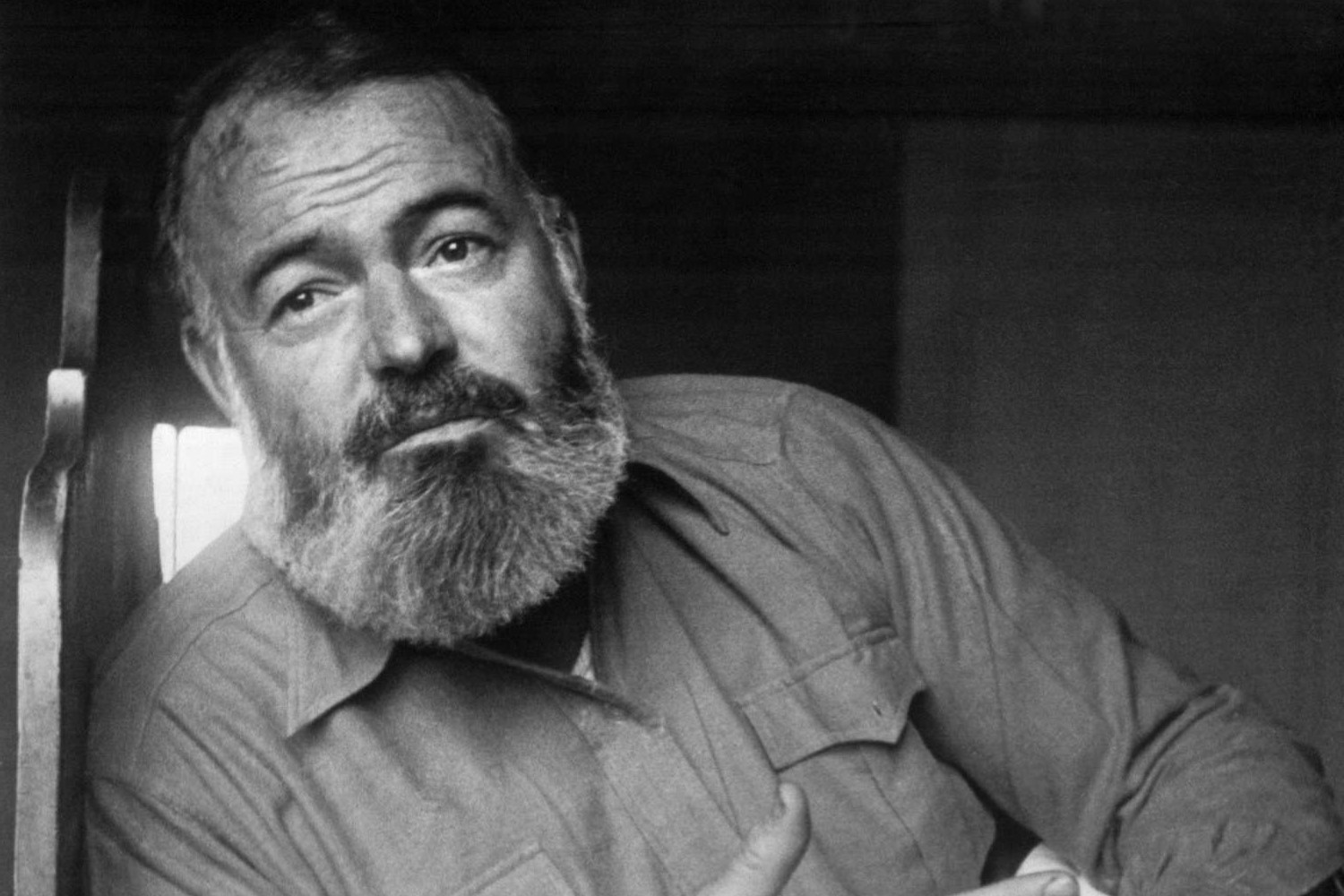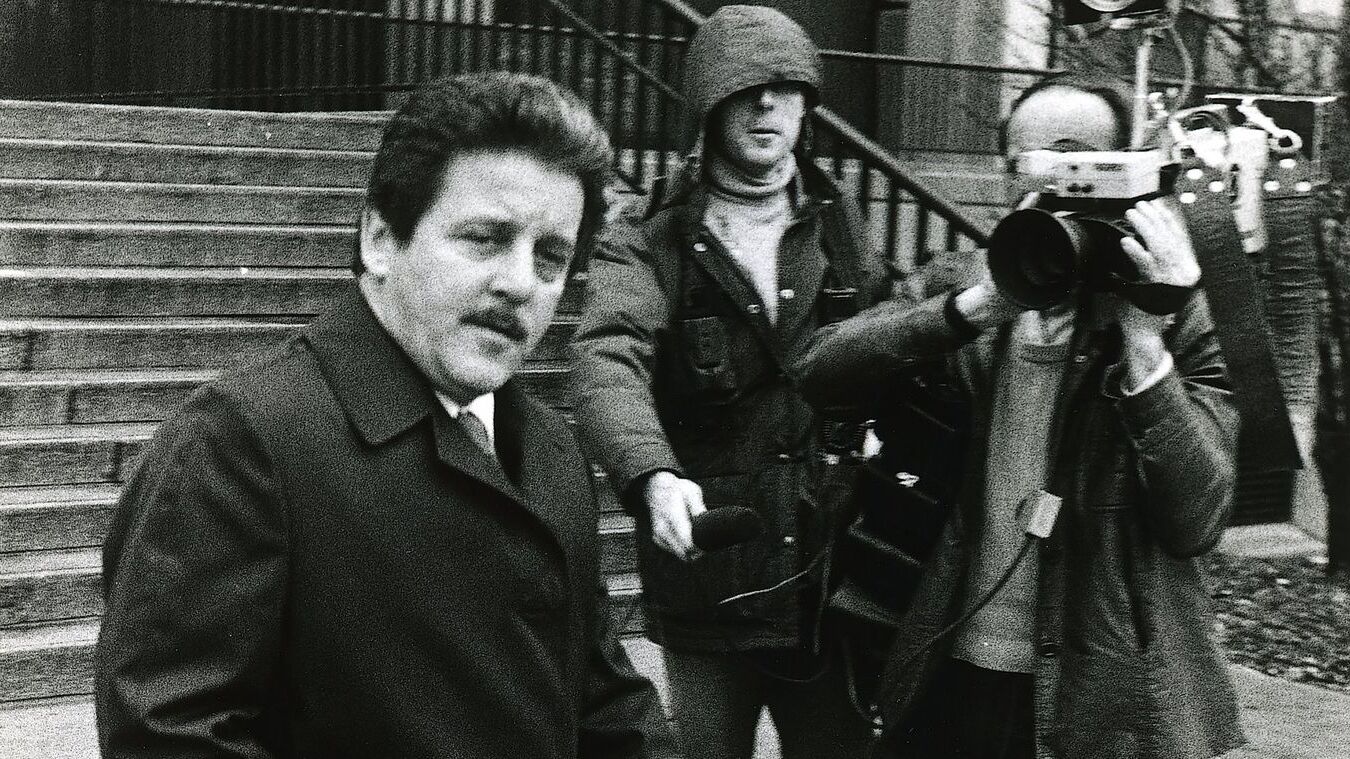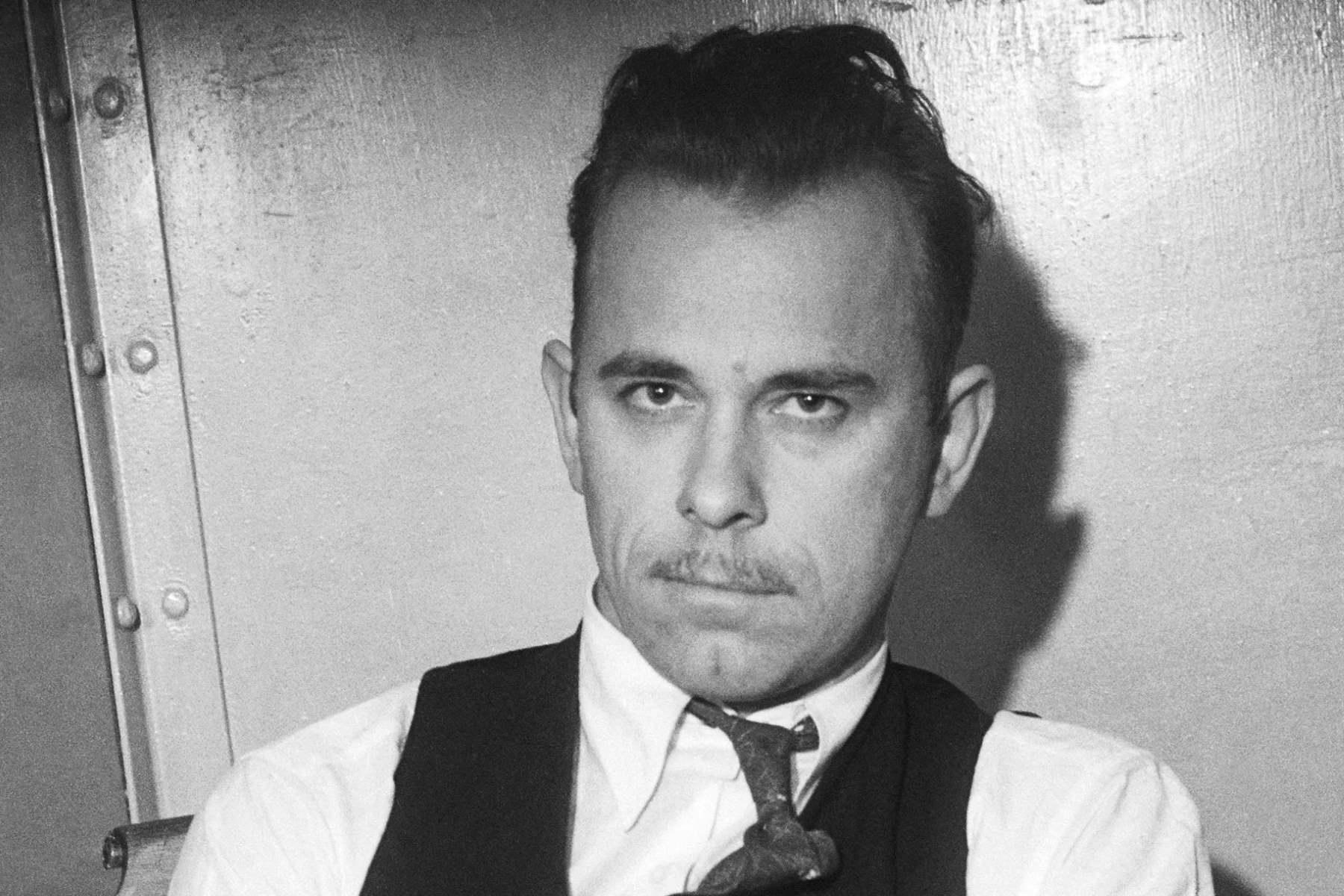
Ever wondered what made Ernest Hemingway such an iconic figure in literature? Born on July 21, 1899, in Oak Park, Illinois, Hemingway's life was a whirlwind of adventure, war, love, and loss. From his early days as a journalist to his experiences in World War I and the Spanish Civil War, every chapter of his life influenced his writing. Known for his concise, impactful storytelling, Hemingway penned classics like The Sun Also Rises and A Farewell to Arms. His personal life was equally compelling, marked by four marriages, numerous physical challenges, and a passion for bullfighting and big game hunting. Dive into these 35 intriguing facts to uncover the man behind the legend.
Key Takeaways:
- Ernest Hemingway's early life and experiences, including his time as a journalist and his service in World War I, greatly influenced his iconic writing style and themes of war and adventure.
- Hemingway's personal quirks, unique interests, and tumultuous relationships added to his enigmatic persona, shaping his legacy as a literary giant and cultural icon.
Early Life and Influences
Ernest Hemingway's early years were filled with experiences that shaped his future writing. From his family dynamics to his education, each aspect played a crucial role in molding the literary giant he would become.
-
Ernest Hemingway was born on July 21, 1899, in Oak Park, Illinois, to Clarence Edmonds Hemingway and Grace Hall Hemingway. His father was a physician, and his mother was a musician, both of whom influenced his early life.
-
Hemingway's mother, Grace, wanted a girl and often dressed him in dresses and called him Ernestine. This early exposure to femininity might have influenced his later views on masculinity and identity.
-
He attended Oak Park High School, where he began writing for the school newspaper. His passion for storytelling was evident from an early age, and he continued to hone his craft through various writing endeavors.
-
After high school, Hemingway worked as a journalist for the Kansas City Star. His experience in journalism laid the foundation for his future writing career, teaching him the importance of concise and impactful storytelling.
War and Adventure
Hemingway's life was marked by his involvement in wars and his thirst for adventure. These experiences deeply influenced his writing and added a layer of authenticity to his works.
-
During World War I, Hemingway served as an ambulance driver in Italy. His experiences on the front lines deeply influenced his writing, particularly in his novel A Farewell to Arms. He was awarded the Italian Silver Medal of Valor for his bravery.
-
On July 8, 1918, Hemingway was badly wounded by mortar fire while serving in Italy. Despite his injuries, he managed to help an Italian soldier reach safety, earning him the Italian Silver Medal of Valor.
-
After the war, Hemingway moved to Paris, where he became part of the expatriate community. This period was transformative for him, exposing him to diverse intellectual influences that significantly impacted his writing style.
-
Hemingway's literary career took flight in the 1920s. His novel The Sun Also Rises, published in 1926, marked a significant milestone in his career. It was a groundbreaking work in the Modernist movement, exploring themes of expatriation and cultural disruption.
Personal Life and Relationships
Hemingway's personal life was as tumultuous as his professional one. His relationships, marriages, and personal quirks all contributed to the man behind the legend.
-
Hemingway was married four times: to Elizabeth Hadley Richardson, Pauline Pfeiffer, Martha Gellhorn, and Mary Welsh. Each marriage influenced his writing, with many of his works dedicated to his wives.
-
Hemingway's writing style, often referred to as the "Hemingway style," was characterized by its directness and emotional impact. He believed in omitting unnecessary details, encouraging readers to infer and engage actively with his narratives.
-
Some of Hemingway's most beloved works include A Farewell to Arms (1929), For Whom the Bell Tolls (1940), and The Old Man and the Sea (1953). These novels showcased his ability to capture the human condition and the complexities of war.
-
Hemingway covered the Spanish Civil War as a journalist, placing himself among the Republican forces. This experience deeply influenced his novel For Whom the Bell Tolls, which captured the brutality and raw emotions of war.
Health and Hardships
Despite his success, Hemingway faced numerous physical and mental challenges throughout his life. His resilience in the face of adversity is a testament to his indomitable spirit.
-
Hemingway's memoir A Moveable Feast, published posthumously in 1964, detailed his experiences in Paris during the 1920s. The book includes a famous anecdote about settling a dispute between F. Scott Fitzgerald and his wife by confirming Fitzgerald's manhood.
-
Following D-Day in 1944, Hemingway led a band of Resistance fighters in the French town of Rambouillet. He was accused of war crimes but was eventually cleared of wrongdoing. Hemingway maintained that he acted as an advisor rather than a commander.
-
Hemingway's life was marked by numerous physical challenges. He survived skin cancer, anthrax, malaria, dysentery, hepatitis, anemia, high blood pressure, a ruptured kidney, a ruptured spleen, a ruptured liver, pneumonia, a crushed vertebra, and a fractured skull. He also experienced three car crashes and back-to-back airplane crashes.
-
In 1954, Hemingway survived two plane crashes in two days. The first crash occurred when his plane struck a telegraph wire in Uganda, and the second plane caught fire on takeoff, severely injuring him. Despite these incidents, he continued to live a life of adventure.
Unique Interests and Quirks
Hemingway's interests and personal quirks added to his enigmatic persona. From his love for polydactyl cats to his fascination with bullfighting, these aspects of his life made him a truly unique individual.
-
In 1935, while fishing in the Gulf Stream, Hemingway accidentally shot himself with a .22 pistol. The bullet ricocheted and went through both of his calves. He wrote about the experience in Esquire magazine, noting there was "absolutely no pain at all".
-
Hemingway became fascinated with bullfighting in Spain during the 1920s and '30s. This interest influenced his writing, particularly in Death in the Afternoon, where he explored the cultural significance of bullfighting.
-
Hemingway loved polydactyl cats, which have six or more toes on each foot. He had several of these cats at his home in Key West, Florida, and they became a symbol of his unique personality.
-
Hemingway's house in Key West features a urinal from his favorite bar, Sloppy Joe's. He converted the urinal into a fountain, reflecting his quirky and adventurous spirit.
Legacy and Impact
Hemingway's legacy extends far beyond his writing. His influence on literature and culture is immeasurable, and his works continue to captivate readers worldwide.
-
Each of Hemingway's four wives received a dedicated book. The Sun Also Rises was dedicated to Elizabeth Hadley Richardson, Death in the Afternoon to Pauline Pfeiffer, For Whom the Bell Tolls to Martha Gellhorn, and Across the River and Into the Trees to Mary Welsh.
-
In 1954, Hemingway received the Nobel Prize for Literature. This recognition solidified his position as one of the most influential writers of the 20th century.
-
Hemingway's family has continued his legacy in various fields. His granddaughter, Margaux Hemingway, was an actress and model, while his granddaughter Mariel Hemingway is also an actress and model.
-
Hemingway was known for his eccentricities. He preferred to write standing up rather than sitting down, and he often rewrote the last page of his works multiple times to ensure perfection.
-
Hemingway was involved in several physical altercations throughout his life. He sparred with former heavyweight champ Gene Tunney and flattened poet Wallace Stevens after Stevens struck him first. These incidents reflect his volatile personality.
-
Hemingway also fought Orson Welles in a movie theater during a screening of a film about the Spanish Civil War. The two men laughed and shared a bottle of whiskey after the incident, highlighting the complex and often tumultuous nature of Hemingway's relationships.
-
Actress Ava Gardner, who appeared in three film adaptations of Hemingway's works, skinny-dipped in his pool at his home in Cuba. Hemingway threatened to fire anyone who drained the water, adding to the anecdote's quirky charm.
-
In a famous incident, Hemingway accidentally shot a toilet at the Ritz Hotel in Paris. The crime scene was a room that flooded, and the incident remains one of the most enduring myths about Hemingway's life.
-
Hemingway's life has been explored in terms of gender fluidity, particularly in his early years when he was dressed in dresses by his mother. This aspect of his life has been highlighted in recent studies and biographies.
-
Hemingway took his own life on July 2, 1961, at his home in Ketchum, Idaho. His death was a tragic end to a life marked by both incredible achievements and personal struggles.
-
Hemingway's legacy extends far beyond his writing. He revolutionized American literature with his unique style and thematic explorations. His influence can be seen in many contemporary writers and artists.
-
Hemingway's life played out during a tumultuous time in history. His experiences in World War I and the Spanish Civil War deeply influenced his writing, reflecting the complexities and brutalities of war.
-
Hemingway's impact on literature is immeasurable. His direct and emotional writing style has inspired generations of writers. His novels continue to be widely read and studied, offering insights into the human condition.
-
Hemingway became a cultural icon, symbolizing the adventurous spirit of the 20th century. His love for the outdoors, bullfighting, and big game hunting added to his enigmatic persona, making him a fascinating figure in popular culture.
-
Despite his passing over 60 years ago, Hemingway's works remain incredibly popular. His novels continue to be adapted into films and stage productions, ensuring his legacy endures in the hearts of readers and audiences worldwide.
Hemingway's Lasting Impact
Ernest Hemingway's life was a whirlwind of adventure, love, and literary brilliance. Born in Oak Park, Illinois, he grew into one of the 20th century's most iconic writers. His experiences as a journalist, ambulance driver in WWI, and war correspondent shaped his unique writing style. Hemingway's novels like The Sun Also Rises, A Farewell to Arms, and The Old Man and the Sea continue to captivate readers with their directness and emotional depth. Despite personal struggles and health issues, his legacy endures. His influence on literature and culture remains profound, inspiring countless writers and readers. Hemingway's adventurous spirit, from bullfighting in Spain to surviving plane crashes, adds to his enigmatic persona. His works and life story offer timeless insights into the human condition, ensuring his place in literary history.
Frequently Asked Questions
Was this page helpful?
Our commitment to delivering trustworthy and engaging content is at the heart of what we do. Each fact on our site is contributed by real users like you, bringing a wealth of diverse insights and information. To ensure the highest standards of accuracy and reliability, our dedicated editors meticulously review each submission. This process guarantees that the facts we share are not only fascinating but also credible. Trust in our commitment to quality and authenticity as you explore and learn with us.


